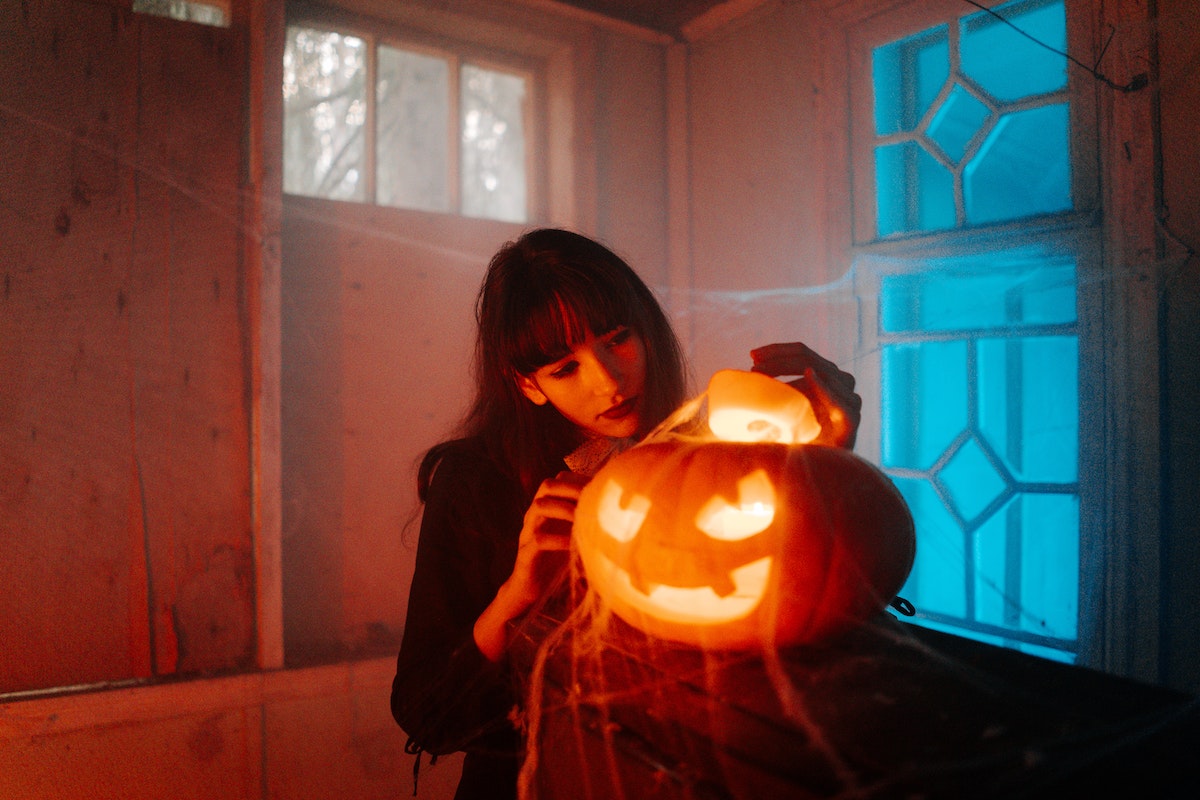For starters, let’s get the pronunciation out of the way! Samhain is pronounced SOW-in or SOW-een. If you’re unfamiliar with Gaelic word structures, Samhain is an easy one to jumble.
OK, now that’s out of the way, Samhain is one of eight festivals celebrated by many Pagan communities, Wiccans, and spiritualists all over the world. As you probably already guessed, this festival has deep Celtic roots—it marks the Celtic New Year, the transition between summer harvest and winter. For believers, it’s thought that the year is divided into two parts—the lighter and the darker—and Samhain is the transition period that leads us from the lighter into the darker. It’s thought that the veil between our world of the living and the unseen world of the dead (or of the spirits, as I prefer to say) is weakened during this transition.
When the veil is weakened there’s roughly a 24-hour period when spirits can cross over into the world of the living—or vice versa—and interact with us. This veil thinning happens on a specific day that, through modernization and depending on which Pagan or Wiccan group you ask, falls anywhere between October 31 and November 1. The Samhain festival celebrates and heeds the veil thinning which you will see when you read about the many traditions related to spirits and fae.
As you see, Samhain aligns with modern day Halloween, as Halloween (previously All-Hallows Eve) originated from Samhain traditions and mythology. Samhain is so much more than costumes and candy, though!
The mythologies of Samhain
Samhain doesn’t have just one origin—there are many myths surrounding the festival that highlight its rich history and impact. It’s important to understand that, like most national mythologies, Irish mythology centers heavily around specific historical events—mainly battles—that can be hard to keep up with. My explanations will be short and sweet however I strongly advocate for doing more investigating if you find yourself interested!
Fionn Mac Chumhaill
Fionn Mac Cumhaill is a recurring hero and warrior in Irish mythology who triumphed in many battles. There’s a tale revolving around the day of Samhain wherein every year for 23 years a fire-breathing monster called Aillen would come and burn down the court of Tara after first tricking the warriors into sleep. One year, Fionn, using a spear to prick his own forehead to avoid falling asleep, slays the creature and frees Tara from the deathly cycle.
Lugh
Lugh is an Irish sun-god who takes over the Tuatha de Danann—the Tara court mentioned above—during a battle that they were losing against the Fomorians. With his help, the Tuatha de Danann are victorious. It’s noted that the day he came down from the heavens to help was Samhain. You could consider the sun god’s coming down to earth in this myth as an explanation for seasonal changes, especially the changes in light.
The Cailleach
The Cailleach, otherwise known as the Crone, is the goddess of the cold and the winds. She’s believed to cross over during the thinning of the veil to speed up the decay of vegetation and hurry winter’s progression. She is neither good nor bad and was thought during more ancient times to be the decider of who would survive the winter. She helps explain the changing of the seasons and the hardships that come from winter, starting with the change between October and November.
The Fae Realm
Perhaps one of the most interesting aspects of Celtic mythology—especially to practicing Pagans and Wiccans—is faerie lore. In Ireland, there are five main types of fae: the banshee, leprechaun, pooka, dullahan, and changelings. There’s a plethora of fae mythology surrounding Samhain that I can’t possibly begin to cover here, but I suggest looking up the Cath Maige Tuired stories surrounding Samhain and the story of Echtra Nera. I will say that many precautions were taken during Samhain to avoid interactions with malicious fae, such as keeping an iron nail (the hated metal of the fae) in one’s pocket or avoiding walking near water after dark.
The Traditions of Samhain
Like all sacred days, Samhain has very specific traditions that are celebrated during the festival, many of which have roots in the ancient mythologies discussed above!
Dumb Supper
The Dumb Supper—supéar ar balbh—began during the medieval era, at which point it was a silent (hence the name) dinner held at dusk or midnight, lit with candles, and performed entirely backwards, including dish placement and meal order. The food served included soul cakes—considered to be an origin to trick-or-treating—and dishes made with seasonal crops such as pumpkins and apples. Masks were sometimes worn for protection and an extra seat may have been included at the table to welcome the spirits of family members who had passed.
Bonfires
Samhain is one of eight pagan festivals but, more importantly, it’s a fire festival (one of four). Bonfires and personal fires were very important as a form of prayer during fire festivals. Communities, led by Druid priests, would each light a wheel representative of the sun on fire and each member would take a flame back to their homes to light their own fires.
Jack-o'-lanterns
Though today they’re made with pumpkins, jack-o'-lanterns were originally made from turnips or potatoes! Faces were carved into the vegetable and a piece of burning coal was placed inside. These lanterns were then placed in windows or carried around when venturing outside after dark as a way of warding off—or sympathizing with—a spirit figure known as stingy Jack who wanders Earth during Samhain. His story is much too long to condense here but is worth the read if you’re interested—there are lots of twists, turns, and devilish antics!
How you can celebrate
So maybe after reading this, you want to incorporate some of the Samhain magic into your own life. As a practicing pagan, I fully support your decision to bring into your life the things that align most with who you are, even if you aren’t a practicing pagan. As long as you’re respectful to the traditions and celebrate in an honest—that is, not in a showy or mocking way—then go ahead!
I think the best ways to celebrate are by following old traditions, although I admit that sometimes sitting and eating in silence with your friends is not the vibe you’re after. In that case, taking little pieces from these traditions is still a legitimate form of celebration. Perhaps try making Irish soul cakes or carving a jack-o'-lantern of your own. Better yet, if local rules allow it, bring your favorite people together for a bonfire!
Personally, I’ll be lighting a few candles with my best friend, putting some spooky decorations on my altar, and enjoying a night of laughter and dancing. Truly, it’s the thought that counts. Happy Samhain!

